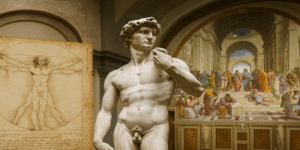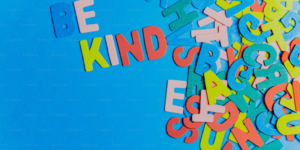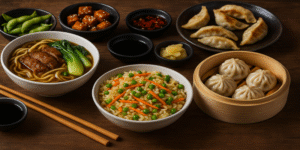Karate, a martial art originating in Okinawa, Japan, has evolved from a system of self-defence into a global discipline encompassing sport, philosophy, and education. Today, karate is not only a method of physical training but also a pathway to self-discipline, character development, and cultural appreciation. This article explores its history, philosophy, and educational significance, as well as its role in modern society.
Origins of Karate
The word karate translates to “empty hand” in Japanese, symbolising a form of combat without weapons. Karate developed in the Ryukyu Kingdom (modern Okinawa), influenced by both Chinese martial arts and indigenous Okinawan fighting traditions (Cowie & Dyson, 2016). Okinawan masters synthesised striking, blocking, and defensive movements, eventually formalising them into structured systems known as styles or ryū.
By the early 20th century, karate had been introduced to mainland Japan, where it was systematised within schools and universities. Masters such as Gichin Funakoshi—often referred to as the father of modern karate—played pivotal roles in codifying karate into styles such as Shotokan, while others developed schools like Goju-Ryu, Shito-Ryu, and Wado-Ryu (Bangladesh Karatedo, 2023). These styles shared common roots but emphasised different techniques, philosophies, and training methods.
Karate as Philosophy
Karate is not only a physical practice but also a philosophy of life. The Dojo Kun—a set of ethical principles recited in training halls—reminds practitioners to seek perfection of character, foster respect, and pursue self-control (Cynarski, 2019).
Martial arts scholars argue that karate embodies principles of Buddhist and Confucian philosophy, emphasising mindfulness, humility, and the unity of body and spirit (Priest, 2013). Jennings (2020) highlights that karate pedagogy often integrates kata—formalised patterns of movements—as a means of cultivating discipline, focus, and respect for tradition. Thus, karate transcends sport and becomes a form of moral education.
Karate in Education
Karate has long been used as an educational tool in both physical and moral development. Cynarski and Lee-Barron (2014) argue that martial arts, including karate, can be integrated into physical education curricula to foster resilience, confidence, and ethical behaviour.
In the UK, karate was introduced in the 1950s by pioneers such as Vernon Bell, who brought the art from France after studying with Japanese masters (Bangladesh Karatedo, 2023). Since then, karate has been embedded within schools, community centres, and universities, often emphasising both physical fitness and the cultivation of values like perseverance and respect (Light & Eckford, 2025).
Furthermore, karate is considered a form of lifelong learning. Adults often join classes not only for physical exercise but also for stress relief and social connection (Spring, 2018). In this way, karate contributes to both mental health and community cohesion.
Karate as Sport
Karate has grown into a global sport, with federations standardising rules for competition. The World Karate Federation (WKF) is the largest governing body, recognised by the International Olympic Committee, and karate made its Olympic debut at the Tokyo 2020 Games.
Competitive karate includes kata competitions, where athletes demonstrate pre-arranged forms, and kumite, where two practitioners spar under controlled conditions (Kagawa, 2018). While sport karate emphasises performance and achievement, traditionalists caution against over-commercialisation, stressing the importance of preserving karate’s philosophical and self-defence dimensions (Hata & Sekine, 2010).
Social and Cultural Dimensions
Karate is more than an athletic pursuit; it is embedded in cultural transmission. Jennings (2014) observes that karate training often involves the learning of Japanese terminology, etiquette, and rituals, thereby promoting intercultural awareness. In multilingual clubs, particularly in cosmopolitan areas like London, karate also fosters language acquisition and cultural appreciation (Zhu, Li & Jankowicz-Pytel, 2020).
From a sociological perspective, karate clubs are communities of practice, where individuals of different ages, backgrounds, and abilities come together (Jones, 1982). The emphasis on hierarchy, respect for seniors, and ritualised behaviour contributes to social order and identity formation within these communities.
Karate and Health
Research also highlights karate’s role in physical and mental health. It provides cardiovascular benefits, muscular strength, flexibility, and coordination (Cynarski, 2014). Beyond the physical, karate has been linked to psychological resilience, stress reduction, and increased self-esteem, particularly among young people and vulnerable populations (Jennings, 2014).
Furthermore, the practice encourages mind-body integration. Philosophical traditions in karate stress the balance of inner calm and outer strength, which resonates with contemporary approaches to mindfulness and wellbeing (Lloyd, 2014).
Contemporary Challenges
Despite its popularity, karate faces challenges in the modern era. Some critics argue that the rise of mixed martial arts (MMA) and combat sports has overshadowed traditional martial arts (Priest & Young, 2010). Others note that the commercialisation of karate has led to a proliferation of unregulated clubs and inconsistent teaching standards (Spring, 2018).
The question of professionalisation is increasingly debated, with scholars suggesting that karate instruction should be standardised through formal qualifications and oversight to ensure quality and safety (Spring, 2018).
Karate is a multifaceted discipline that combines physical training, philosophical reflection, cultural appreciation, and social development. From its roots in Okinawa to its modern practice across the globe, karate has transformed into both a traditional art and a modern sport.
While challenges exist, particularly around regulation and the balance between sport and tradition, karate continues to thrive as a pathway to self-discipline, cultural understanding, and lifelong learning. For many, it remains not only a martial art but also a way of life.
References
Bangladesh Karatedo (2023). History of Karate. [Online] Available at: https://bangladeshkaratedo.com/index.php/history-of-karate/
Cowie, M. & Dyson, R. (2016). A short history of karate. Kenkyo-Ha Goju Karate Kempo Kai. [Available at: http://www.japan-karate.com/ShortHistoryMasterText%20Second%20Edition.pdf]
Cynarski, W.J. (2014). The European karate today: The opinion of experts. Ido Movement for Culture, Journal of Martial Arts Anthropology. [Available at: http://imcjournal.com/images/14.3/14.3.2.pdf]
Cynarski, W.J. & Lee-Barron, J. (2014). Philosophies of martial arts and their pedagogical consequences. Ido Movement for Culture. [Available at: http://imcjournal.com/images/14.1/14.1.2.pdf]
Hata, T. & Sekine, M. (2010). Philosophy of sport and physical education in Japan: history and prospects. Journal of the Philosophy of Sport, 37(1).
Jennings, G. (2014). Transmitting health philosophies through martial arts in the UK. Societies, 4(4), 712–736. https://doi.org/10.3390/soc4040712
Jennings, G., Dodd, S. & Brown, D. (2020). Cultivation through Asian form-based martial arts pedagogy. In: East Asian Pedagogies. Springer.
Jones, R. (1982). The social world of karate-do. Leisure Studies, 1(2), 147–161.
Kagawa, M. (2018). The history of the development of karate as a sport. Aktual’nye Problemy Fizicheskoi Kultury.
Light, R. & Eckford, D. (2025). Teaching karate for the 21st century. Ido Movement for Culture.
Lloyd, H.M. (2014). Martial arts as philosophical practice. In: Philosophy and the Martial Arts. Routledge.
Priest, G. (2013). Martial arts and Buddhist philosophy. Royal Institute of Philosophy Supplements, 73, 219–239.
Priest, G. & Young, D. (2010). Martial arts and philosophy: Beating and nothingness. Chicago: Open Court.
Spring, C. (2018). Professionalisation of the Martial Arts. University of Derby. [Available at: https://repository.derby.ac.uk]
Zhu, H., Li, W. & Jankowicz-Pytel, D. (2020). Whose karate? Language and cultural learning in a multilingual karate club in London. Applied Linguistics, 41(1), 52–74.









